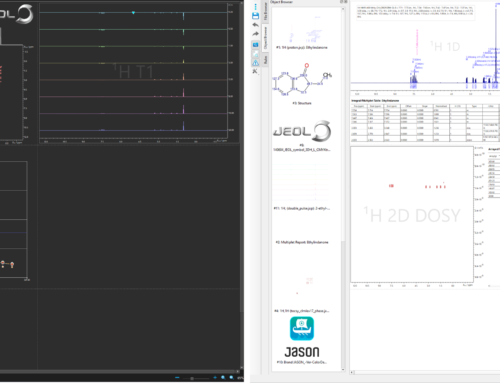What’s new in JEOL JASON version 2.3?
JEOL JASON version 2.3 has been available for download on our website for a couple of months. However, you may still be asking yourself whether you should update your JASON to version 2.3 or wait for the next release? Indeed, JEOL releases new versions of JASON very frequently and you might be wondering what is new in JEOL JASON V2.3. Or, perhaps you have already installed the latest version and you have yet to find all the new features and improvements in JEOL JASON V2.3! To make this easy for you, we have summarised the biggest new features in version 2.3 so you can make sure your JASON is up to date with all the exciting added features!
What’s new
As usual, the complete list of changes and new features is long as our development team works very hard. The headline new functionalities have been highlighted in this and this video available on YouTube. Let’s have a look at some of them:
Rules
The most important and exciting innovation in JASON V2.3 is the introduction of processing, analysis and layout rules. The JASON rules allow you to define how your data are processed based on their type, format and nucleus, and how the resultant spectra and objects are displayed on the canvas. Once you have created your rules, your new NMR data are processed, displayed and reported just as you defined everytime, saving you a lot of time and effort on data processing, plotting and reporting. Rules will make your plots and reports consistent and reproducible. This short video demonstrates the setup and use of rules and really shows the versatility of the JEOL JASON canvas for making reports and displaying your data.
New NMR processing functions
We have implemented baseline correction using Whittaker smoother and Bernstein polynomials. In addition, we have also improved spline baseline correction and baseline correction for pseudo-2D data. By extending the ‘Tilt’ function, JASON can now process solid-state NMR data such as MQMAS (Multiple-Quantum Magic Angle Spinning) and 2D PASS (Phase-Adjusted Spinning Sidebands) data. Hamming apodisation is now available among other window functions.
MAGRES 2 plugin
If solid-state NMR is your field, you will reap the benefits of the updated MAGRES plugin to MARGES 2! The plugin allows you to see and export computed parameters such as CSA (Chemical Shift Anisotropy) and quadrupolar parameters as a table. In addition, synthetic spectra can be edited and regenerated without the need for reloading the data. We have uploaded a video which demonstrates some of the functionalities of the MAGRES 2 plugin.
Stacked spectra
JASON now supports stacking 1D spectra vertically and horizontally allowing you freedom to view your data how best suits you.

You can convert a stack of 1D spectra into a single pseudo-2D spectrum, or display pseudo-2D data, such as DOSY data as a stack, or 1D or 2D spectra.


Why not try JEOL JASON V2.3 right now? Discover how its advanced data processing and analysis tools make it easy to get great results from your datasets and create reports with ease.


